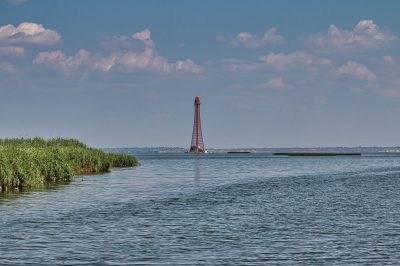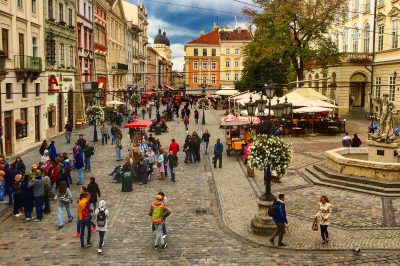Today we take you to the Black Sea. Odesa is one of the most beautiful cities in all of Eastern Europe and something like the summer capital of Ukraine. The city has been inhabited since ancient times and is more cosmopolitan than many other place in the country.
Odesa sights – the most beautiful things to do in Odesa Ukraine
In the following article we present you the most beautiful sights of Odessa and show you the best things to do in Odesa.
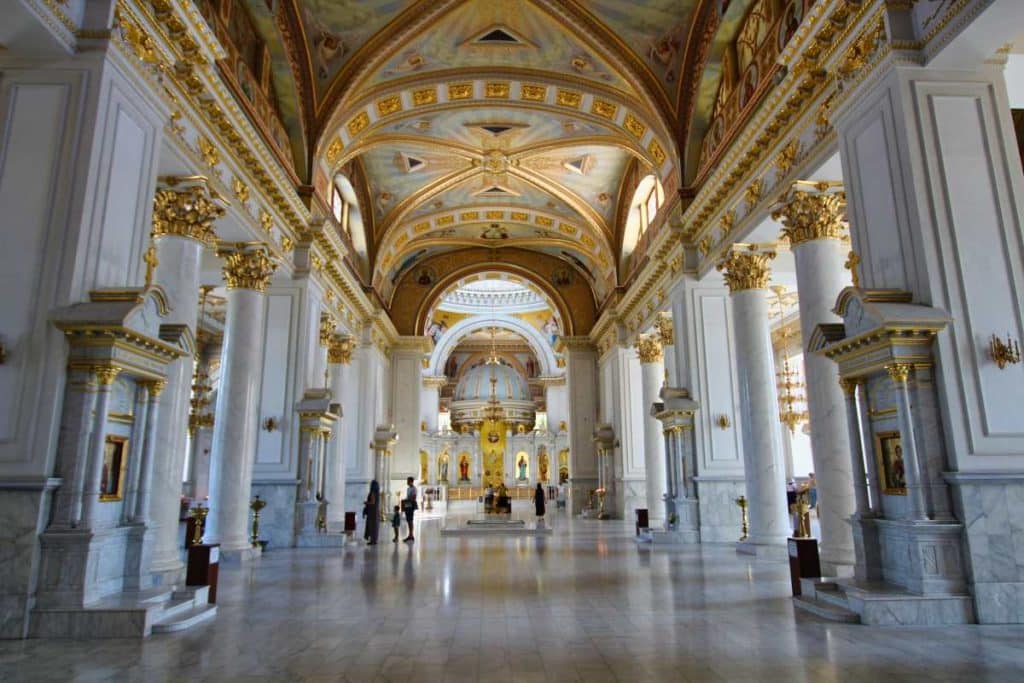
Transfiguration Cathedral
Odessa is rich in beautiful places of worship. But one of them stands out. It was built at the beginning of the 19th century by personal order of Catherine the Great and was strongly influenced by classicism. The huge building provided an opportunity for up to 9000 worshippers to pray at the same time. Stalin had the church destroyed, but from 1999 it was rebuilt. Thus, it became a symbol of the rediscovery of religiosity in Ukraine and the departure from socialism. And as you can see in the picture, the result is really impressive. Modern churches usually look rather boring to us, but here the golden and white colors create a solemn atmosphere.

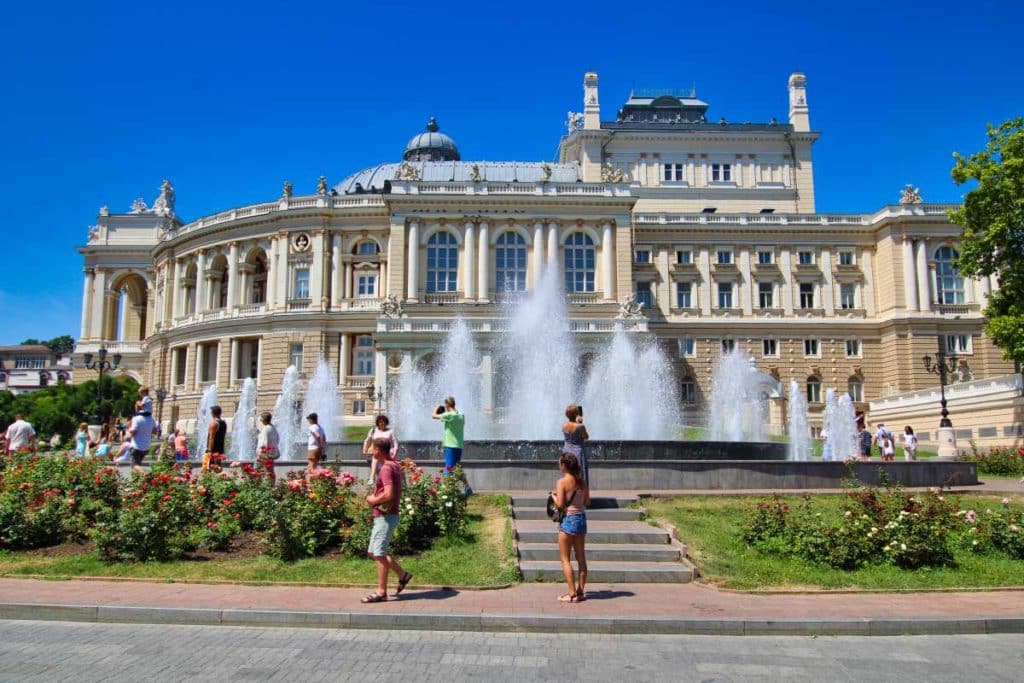

Opera House
Two buildings are fighting for the title of Odesa’s landmark: the Potemkin Stairs and the Opera House. It is a superlative building and one of the most beautiful opera houses in the world. The opera with neo-baroque and rococo elements was built from 1883 onwards. The work was entrusted to the Viennese architectural firm Fellner & Helmer, which also created the magnificent operas and theaters in Budapest, Zagreb, Karlovy Vary, Bratislava, Zurich and the Theater Unter den Linden in Berlin. When you enter the great hall, the gold and velvet take your breath away, but every other detail is just right. And the best thing is that the tickets are very inexpensive; in the cheapest category, you don’t even have to pay €2 to see a performance.
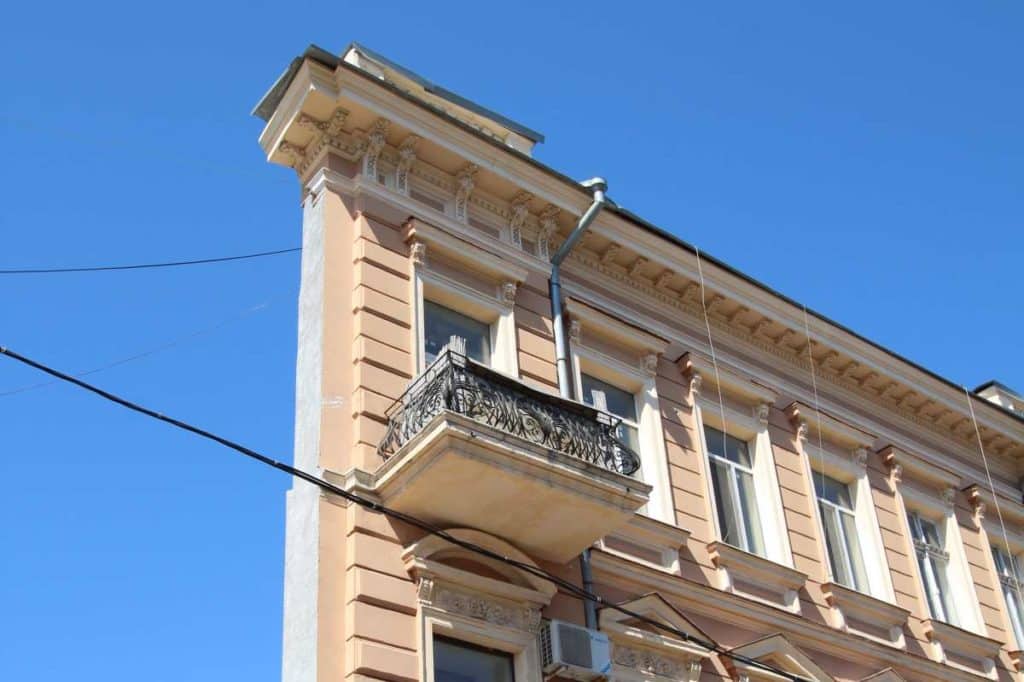
Witch house
The Witch’s House is also called “House with a wall” and is one of the most unusual Odesa sights. From the front it looks quite nice, but not very spectacular. But if you go to the side, the Witch’s House suddenly looks like a movie set. But people actually live here! The special effect comes from the fact that the building was designed at the end of the 19th century in the shape of a triangle. Odesa can be this crazy.
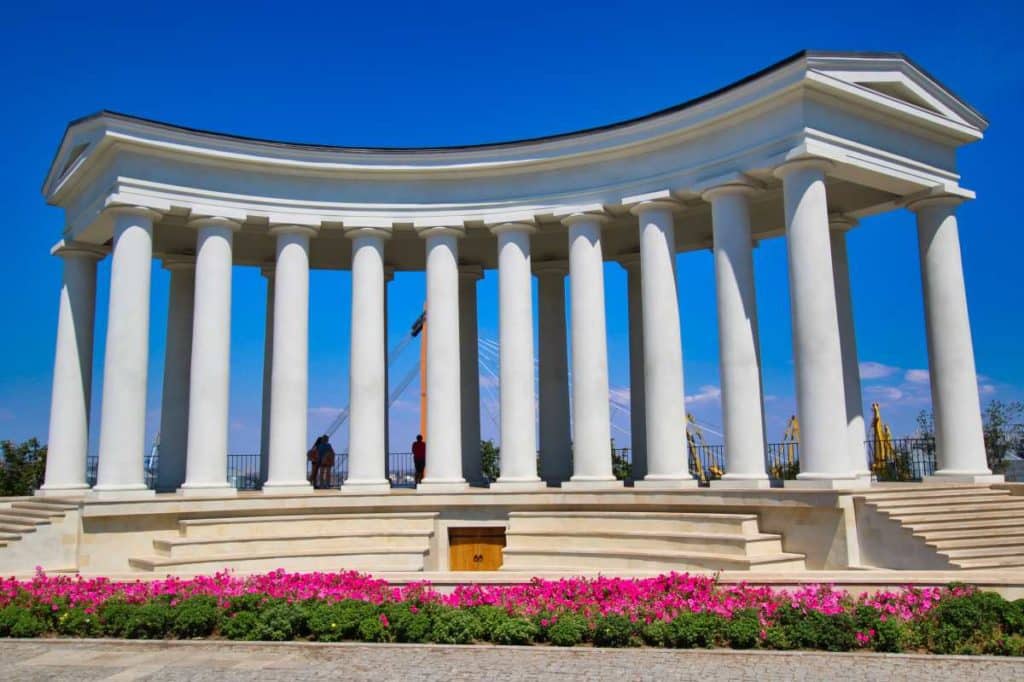
Vorontsov Palace
North of the historic center lays Primorski Boulevard, from which you have a sensational view of the harbor and the Black Sea. The best view is from a quirky-looking colonnade. It is part of a complex built for Russian nobleman Mikhail Semyonovich Vorontsov. The most important part of the complex is the palace. The work was entrusted to the Sardinian master builder Francesco Boffo. Vorontsov was so enthusiastic that he immediately commissioned Boffo to design the Potemkin Staircase as well. In its eventful history, the palace has served different purposes, tickets for cruises were sold here, also the Red Army resided in the building. It is unclear what will happen to the palace in the future.
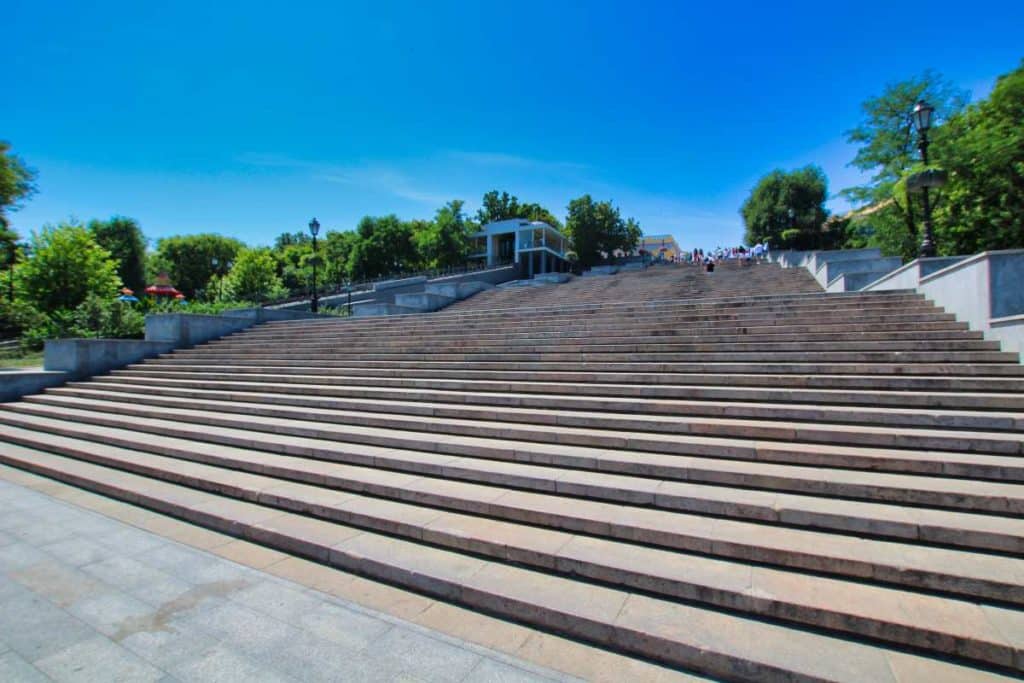
Potemkin stairs
The Potemkin Staircase connects the port with the center and is also called the Masonic Staircase. This is due to the fact that it was built at the ideal angle of 30 degrees for freemasons. You should definitely walk down it completely. Walking 192 steps is really exhausting, but from below you can’t see the upper end and from above you can’t see the lower end. A brilliant move by the architect Boffo, who helped make the staircase perhaps the most famous staircase in the world today.
Watch out, pretty bloody: the famous staircase scene from the silent movie Battleship Potemkin
Eisenstein’s masterpiece
Do you know the movie Battleship Potemkin? Sergei Eisenstein’s 1925 work is considered the best Soviet film in history and commemorates the 1905 Revolution. The most famous scene takes place on Potemkin’s Staircase, where the Tsar’s soldiers fire into the crowd and a baby carriage rolls down the stairs. The staircase today is quite peaceful, but above all impressive.
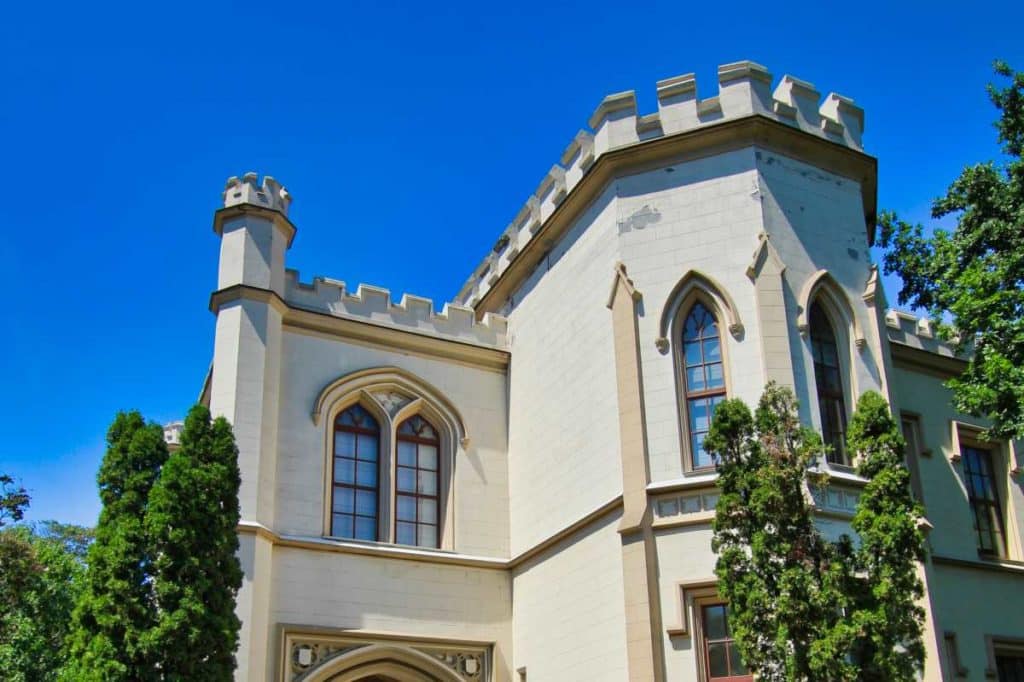
Shakhsky Palace
The Shakhsky Palace is one of the few neo-Gothic buildings in the city and was built in the middle of the 19th century. The limestone palace was built for the Polish tycoon Zenon Brzozowski. From the outside it reminds a bit of a medieval English castle and you really wouldn’t expect such a building in subtropical Odessa. But how did the building get its name? The Persian Shah Mohammed Ali resided here after he was expelled from his homeland. The Shah is said to have maintained a harem here and attracted all eyes in Odesa before the building housed a museum from 1920. Unfortunately, nothing remains of the oriental furnishings.
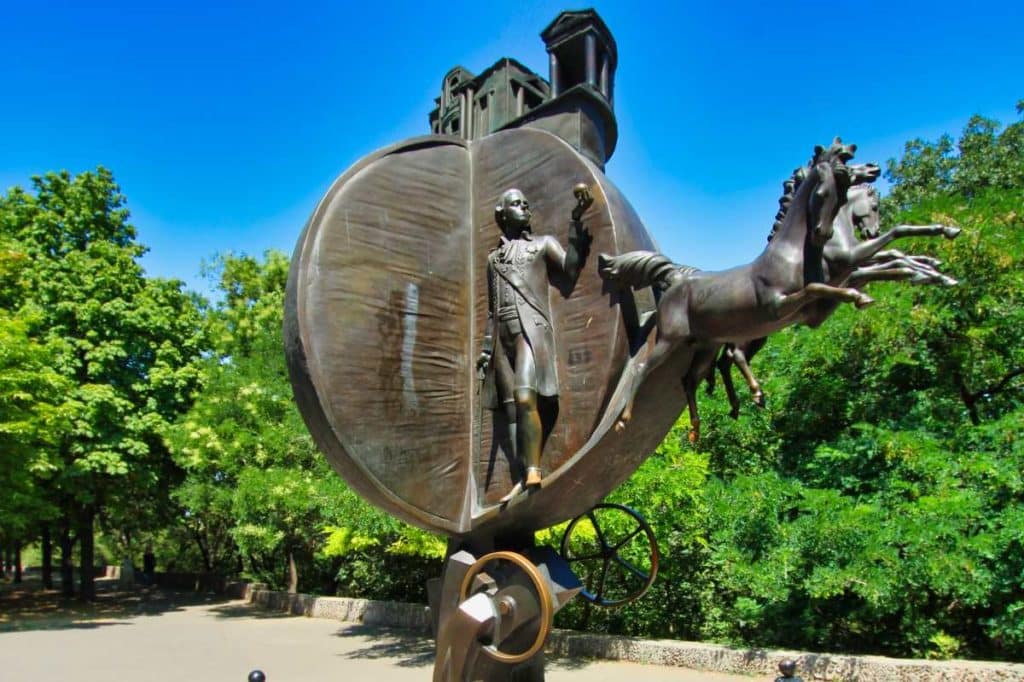
Monument to the orange
A monument to a king, poet or composer – anyone can do that. But a monument to an orange? That exists only in Odessa. But how did the tropical fruit get this honor? At the end of the 18th century, the port, which was important for the survival of the city, was not yet ready. Due to lack of money, Tsar Paul I stopped payment and Odesa was in great distress. Then some resourceful citizens had the idea to send oranges to the tsar to show him how important a port was for the Russian Empire and what goodies he would miss. The tsar had an understanding and granted the funds for the port. And so the orange saved Odesa and more than earned the monument.
Derybasivska Street
Derybasivska Street is the promenade of Odesa. The street is almost one kilometer long. It is located in the very center of Odesa and is characterized by numerous restaurants and cafes. Apart from St. Andrew’s Staircase and Khreshatyk in Kyiv, no other street in Ukraine is that famous. The street has often been sung about and is a parade ground for the rich and beautiful. It was named after the city’s founder José de Ribas, and it takes a bit of imagination to form the name Derybasivska from it. Besides the flair of the street, we like best the city garden at its western end. Here you can rest from your walk and admire the fountains or bronze statues on the benches.
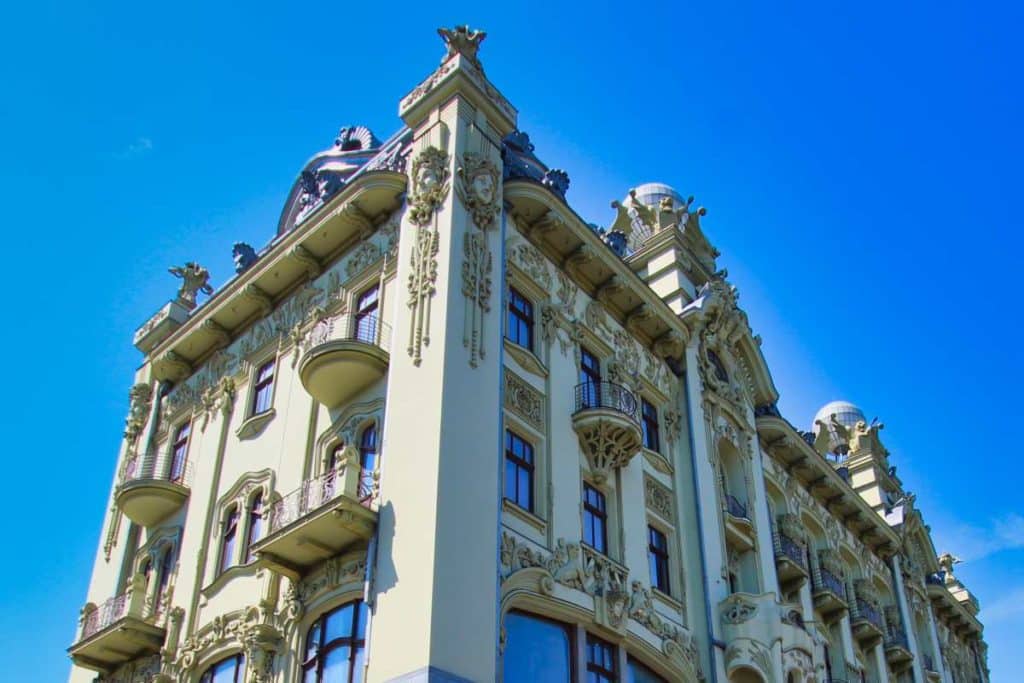
Hotel Velyka Moskovsʹka
At the beginning of the 20th century Odesa experienced a period of prosperity. At that time many beautiful buildings in different styles were built. One of the most beautiful is the Hotel Velyka Moskovs’ka or the Grand Hotel Moscow. The Art Nouveau building designed by Leo Vlodek in a prime location on Derybasivska Street quickly became the city’s premier address. At that time, one had to pay the proud price of 1 ruble for an overnight stay. On the first floor there was a tea house, a lamp store and a haberdashery, and in Soviet times even a cinema. Unfortunately, this gem in a dream location is currently empty. Let’s see what will happen to the hotel in the future.
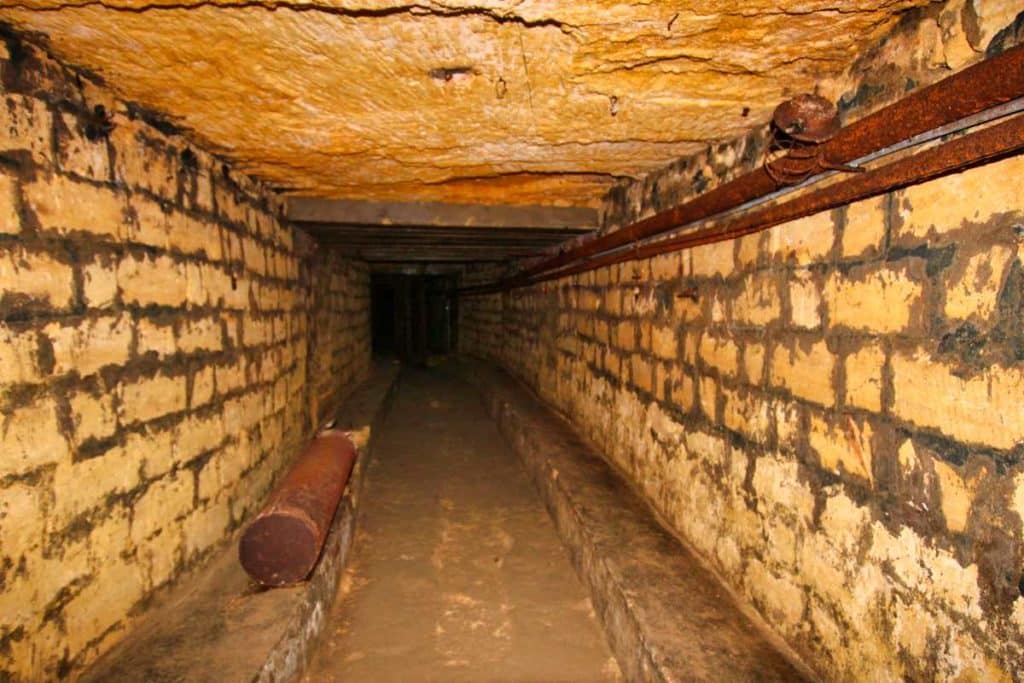
Catacombs under the city
How many underground passages there are under the city, probably no one knows. But it is estimated that the network should include 2500 kilometers in length! All the wonderful buildings of sandstone and limestone, which make up Odessa, were literally “cut” from the ground. Thus, starting from the 19th century, people worked their way further and further, undermining the city from all sides. There are said to be about 1000 different entrances to this tunnel system, many outside the city. On a tour you can explore the tunnel system and admire both the easily accessible and the wild catacombs. But don’t go on a tour alone, there are always accidents! Click here to get to our article about the catacombs in more detail.
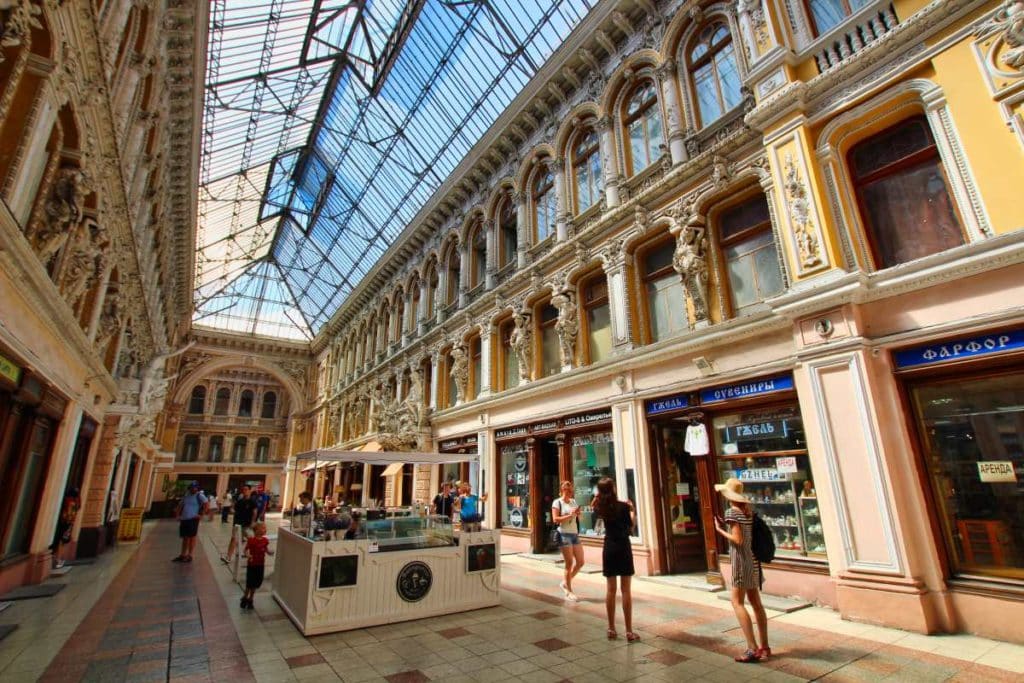
Pasazh shopping center
Modern, soulless shopping malls also exist in Odesa. Fortunately, however, the Pasazh has also been preserved. The shopping complex was built at the end of the 19th century. The complex on Derybasivska Street has nice stores and boutiques, but is visited by tourists mainly because of the many lovely architectural details. Light streams into the shopping arcade through the glass roof, making the walk a real experience. And there’s a hotel here, too! Tip: Right next to Pasazh is a small, quaint alley that is hardly noticed by tourists. Here you can still find a piece of the old Odesa and relax in one of the restaurants.
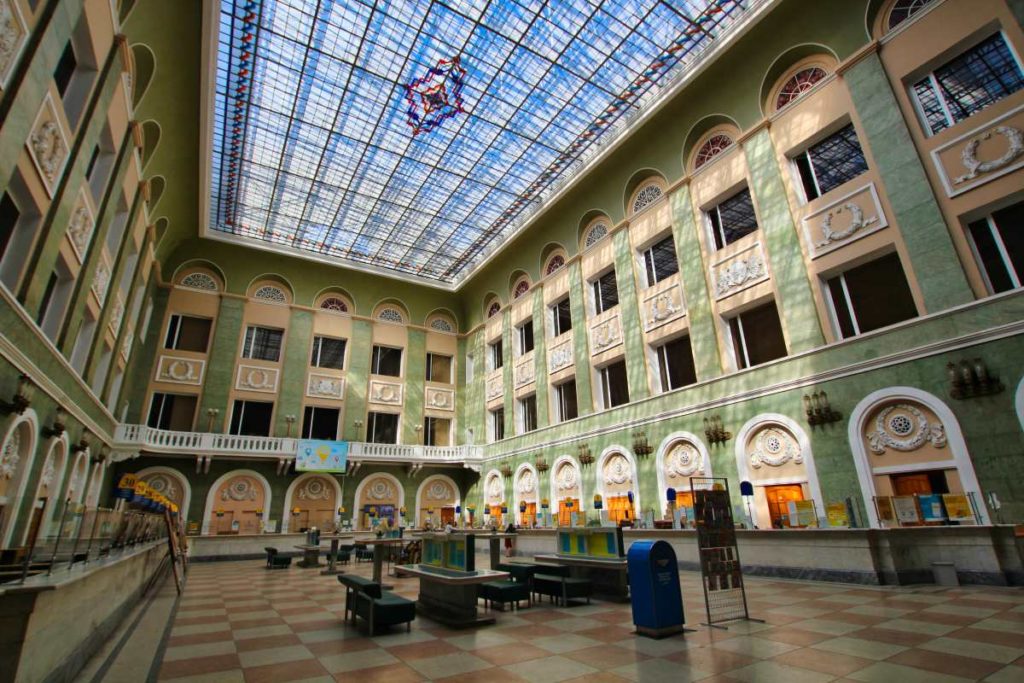
Central post office
When you’re standing in line at the post office for hours, you probably don’t think about visiting a post office on vacation. But things are different in Odesa. In the central post office of the Ukrposhta in Odesa, time seems to have stood still. You want to send a telegram? No problem. Everything seems to be still as it was in 1895, when the post office designed by Vladimir Kharlamov and Vladimir Dombrovsky was opened. The building was badly damaged during World War II, but was rebuilt starting in the 1950s. You can stop by from 8 a.m. to see the magnificent interior with its glass ceiling. Tip: the historical stamps that are available here are a great souvenir.
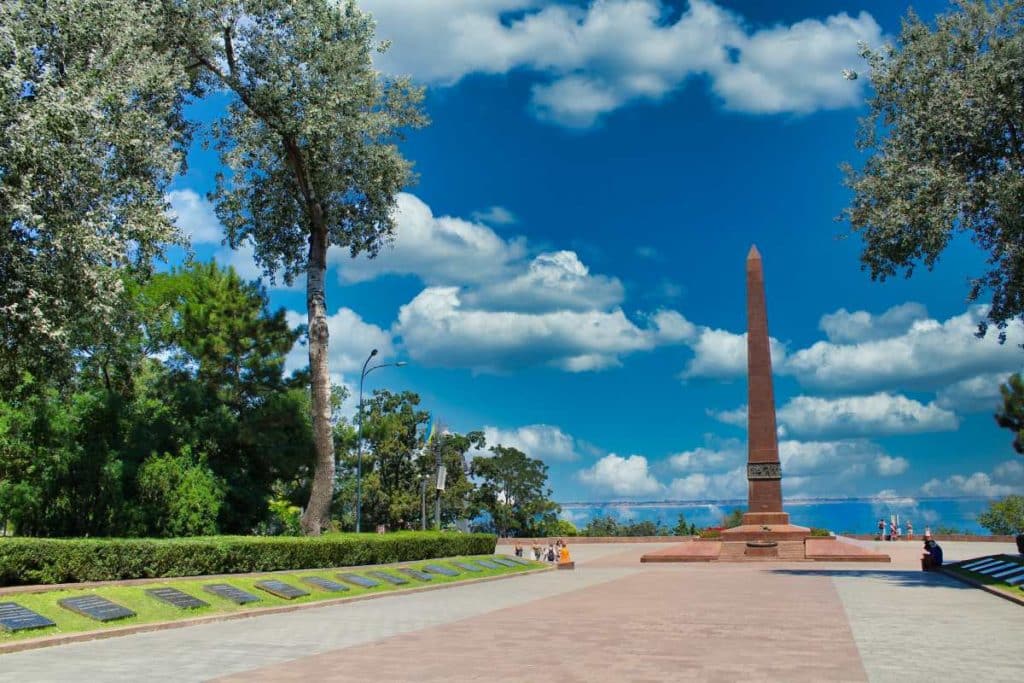
Taras Shevchenko Park
Between the historical center and the seafront stretches a huge park area named after the Ukrainian national poet Taras Shevchenko. The park dates back to an old defensive complex and was then remodeled. In 1875 it was opened after a visit of Tsar Alexander II. Around the stadium of the soccer club Chornomorets Odesa there are now numerous monuments, benches and pavilions. But most of all, you can relax here, walk for hours or eat an ice cream.

The beach promenade
We have now already described some Odesa sights. However, many do not even pay attention to them, but go directly to the beach. And let’s be honest: There are enough reasons to stop by here. The beach promenade stretches for kilometers and is often quite crowded in summer. But you’re sure to find a spot to spread out your towel on the sandy or stony ground and take a dip in the crystal-clear Black Sea. Or you can party in one of the many beach clubs, watch a movie in the open-air cinema during the sunset or have dinner in one of the chic restaurants.

Monument to Catherine the Great
The monument to Catherine the Great is the most visible meeting place in the city. Everyone knows about the monument to the Russian tsarina who was responsible for the founding and development of the city into a military port. Few, however, remember the German roots of the Princess of Anhalt.
Jewish Odessa
Jews settled in Odesa already since the foundation of the city in 1794. They were mostly active as businessmen and traders. Even though the city’s Jews were subjected to pogroms on several occasions, their number increased to over 200,000 by World War II, making up more than a third of the population. This rich heritage was severely damaged by the persecution of Jews during the Romanian and German occupations. Nevertheless, there is still evidence of Jewish life in Odesa today.

Synagogues in Odesa
The first synagogue in Odesa was opened as early as 1798. The Or-Sameach Synagogue at 25 Yevreyska Street was built as early as 1850 and was expropriated by the Bolsheviks in the meantime. As a result, it survived the war and can be visited today. Even more magnificent, however, is the Brodsky Synagogue, which in the 1860s was one of the largest synagogues in the south of the Russian Tsarist Empire. Since 2016, it has once again belonged to the community; previously, it was the city archive. In the future, it will also be home to the Jewish Museum.

Jewish Museum Odesa
So far, however, the museum is still housed in a building in a backyard. On display are many pieces from the history of the city’s Jews. From traditional garments to books written by Jewish Odesites and Yiddish music, everything that the city’s rich Jewish culture has produced is on display. Of course, there is much about the pogroms and the Holocaust in the city but equally about the development and reconstruction of the Jewish community after the end of World War II. The museum is an absolute must for visitors with an interest in Jewish Odesa.


